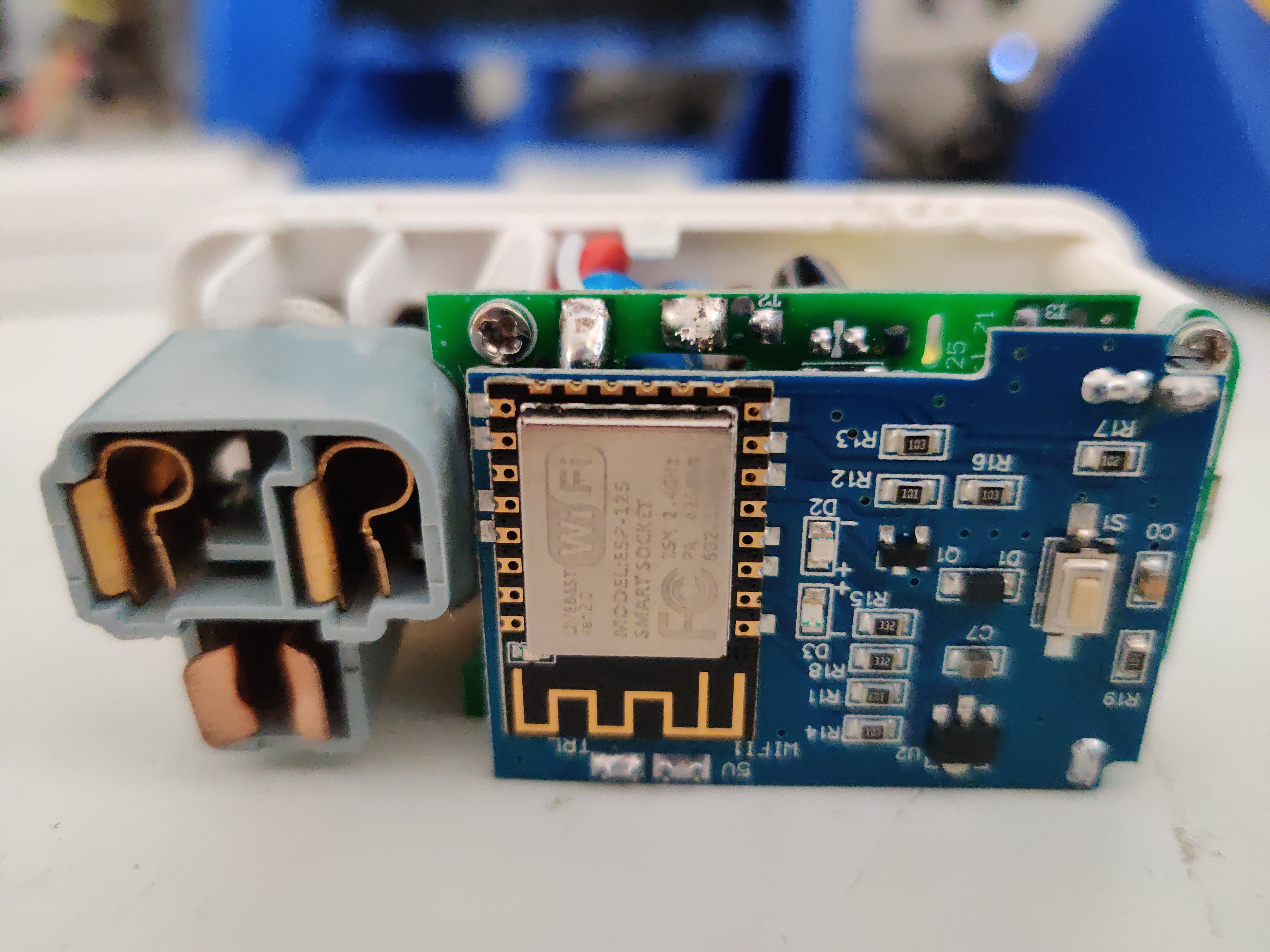Zentec Smart Plug
Standard plug socket, with 2A USB port. Flashable via tuya-convert. Purchased from Amazon.
At least two versions of this plug exist, but the only difference between the two is the pull-up on the pin for the button.
Pictures


GPIO Pinout
| Pin | Function |
|---|---|
| GPIO2 | ESP module blue LED |
| GPIO4 | Red LED |
| GPIO12 | Relay |
| GPI013 | Button (pull-up on older models) |
Basic Configuration
substitutions:
device_name: zentec
friendly_name: Zentec Plug
esphome:
name: ${device_name}
esp8266:
board: esp01_1m
wifi:
ssid: !secret wifi_ssid
password: !secret wifi_password
fast_connect: on #we only have one WiFi AP so just use the first one that matches
ap: #since we listed an SSID above, this AP mode will only enable if no WiFi connection could be made
ssid: ${friendly_name}_AP
password: !secret wifi_password
# Enable logging
logger:
baud_rate: 0 #disable UART logging since we aren't connected to GPIO1 TX
# Enable Home Assistant API
api:
# Enable OTA updates
ota:
safe_mode: True
# Enable web server
web_server:
port: 80
binary_sensor:
- platform: gpio
pin:
number: GPIO13
#mode: INPUT_PULLUP # only needed on older versions of this plug
inverted: True
name: "${friendly_name} Button"
internal: false # set to true to hide from hub
on_click:
- switch.toggle: relay
status_led:
pin:
number: GPIO02
inverted: true
switch:
- platform: gpio
name: "${friendly_name}"
id: "relay"
pin: GPIO12
on_turn_on:
then:
- switch.turn_off: "redLED"
on_turn_off:
then:
- switch.turn_on: "redLED"
restore_mode: ALWAYS_OFF
- platform: gpio
name: "redLED"
id: "redLED"
pin: GPIO4
inverted: true
restore_mode: ALWAYS_ON
internal: true
Split Configuration
If you have multiple of these sockets (likely since they come in packs), you may want to keep the shared code in one file and only put device specific information in files for each relay.
zentec-common.yaml:
esphome:
name: ${device_name}
esp8266:
board: esp01_1m
wifi:
ssid: !secret wifi_ssid
password: !secret wifi_password
fast_connect: on #we only have one WiFi AP so just use the first one that matches
ap: #since we listed an SSID above, this AP mode will only enable if no WiFi connection could be made
ssid: ${friendly_name}_AP
password: !secret wifi_password
# Enable logging
logger:
baud_rate: 0 #disable UART logging since we aren't connected to GPIO1 TX
# Enable Home Assistant API
api:
# Enable OTA updates
ota:
safe_mode: True
# Enable web server
web_server:
port: 80
binary_sensor:
- platform: gpio
pin:
number: GPIO13
#mode: INPUT_PULLUP # only needed on older versions of this plug
inverted: True
name: "${friendly_name} Button"
internal: false # set to true to hide from hub
on_click:
- switch.toggle: relay
status_led:
pin:
number: GPIO02
inverted: true
switch:
- platform: gpio
name: "${friendly_name}"
id: "relay"
pin: GPIO12
on_turn_on:
then:
- switch.turn_off: "redLED"
on_turn_off:
then:
- switch.turn_on: "redLED"
restore_mode: ALWAYS_OFF
- platform: gpio
name: "redLED"
id: "redLED"
pin: GPIO4
inverted: true
restore_mode: ALWAYS_ON
internal: true
And for each device's yaml:
substitutions:
device_name: zentec
friendly_name: Zentec Plug
<<: !include zentec-common.yaml